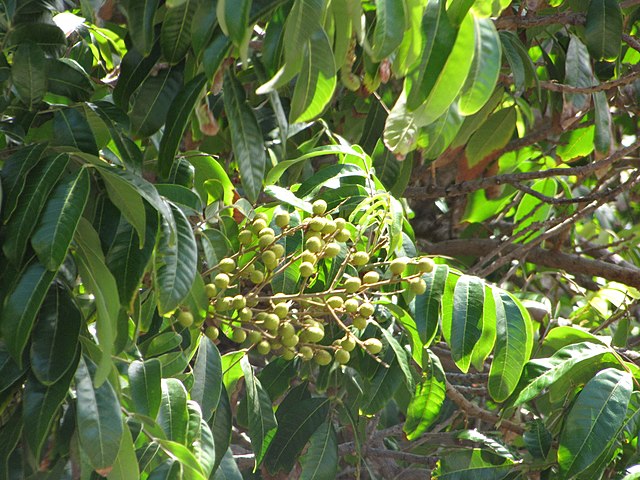Longan
Dimocarpus longan
Family: Sapindaceae | Place of Origin: Foothills of Southeast Asia
Origins and history:
Only cultivated in China for many years and spread throughout Asia and then the world in the last 250 years. It was documented in China more than 2,200 years ago. Longan was brought to the rest of the world in the late-1800’s but the United States didn’t receive them till the mid-1900’s. Its commercial importance was limited to China and Southeast Asia until the 1990’s when it spread to Europe and the United States on the tail of litchi (lychee). 95% of the production is from China, Thailand, and Vietnam. 1,438,000 tons of fruit are produced in total with 1,280,000 tons from China alone. South Africa and Australia are also major producers too. In the U.S. longan orchards produce about 18,000 pounds of fruit per acre per year. That means about $18,800 per acre per year when sold in the U.S. Fresh fruit cannot be shipped far and must be used within 30 days of harvest if refrigerated. Within 3 days of being ripe unrefrigerated fruit begins to rot. When overripe the fruit has an unpleasant meaty taste. The dried fruit is the main export from Thailand. In 2000, $202 million was exported across the world and demand has increased since.

Identification characteristics
- General: Evergreen tree ranging from 30 to 100ft.
- Leaves: It has large alternate compound leaves with 6 to 9 opposite leaflets per leaf. Longan as inconspicuous and yellow bisexual flowers. Small grape-sized fruit form
- Fruit: The fruit is an indehiscent capsule with sweet tropical-fruity flesh made from aril and is generally sweet smelling.
Uses and preparation
The fruit is eaten raw, cooked, dried, and canned. Culinary uses make up most of the commerce of longan. The flavor is used to flavor some deserts. Many of the recipes are sweet desserts. Some are added to savory dishes to make a sweet and savory combination. Medicinal infusion is made of the fruit peels or leaves. The peels have antioxidant properties. The whole fruit and flower are traditionally used to reduce swelling. Teas made from peels and leaves have been found to possibly help reduce symptoms of Parkinson disease. Research was based on a Korean herbal mixture of three plants. The researchers found the tea did alleviate different ailments. Other touted benefits are promoting blood metabolism, soothing nerves, relieving insomnia, preventing amnesia, extending longevity, and curing neural pain. Researchers are using peel extracts to help synthesize prostate cancer treatments. Acids in peel help stabilize the reaction to form silver nanoparticles.